#artist is j.e. millais
Explore tagged Tumblr posts
Text
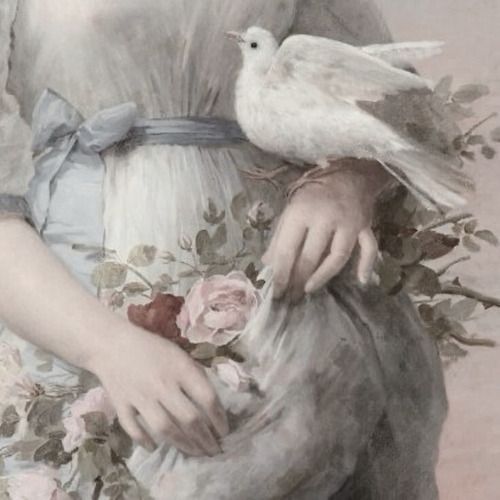
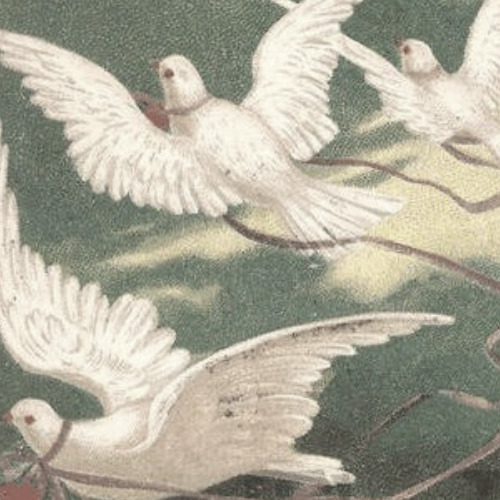

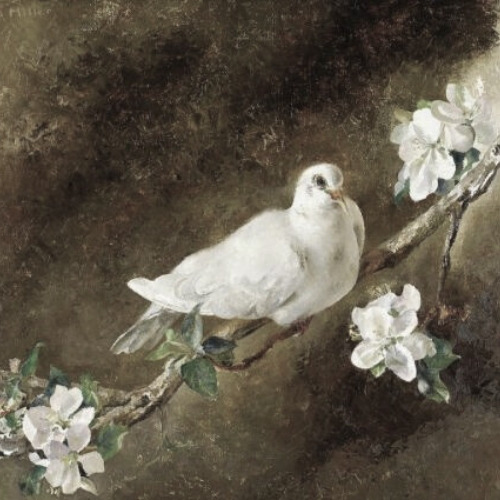
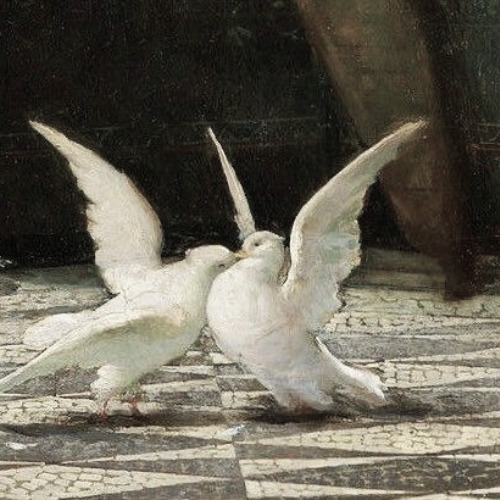
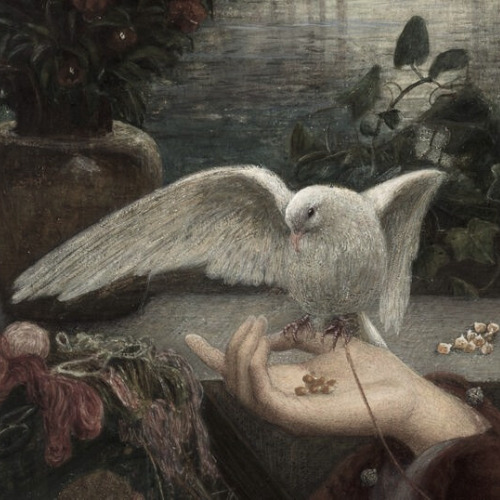

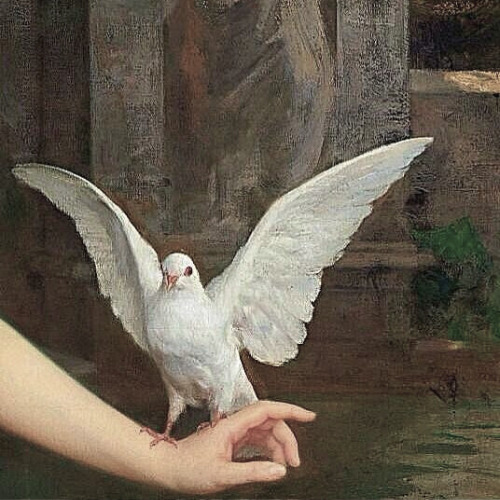

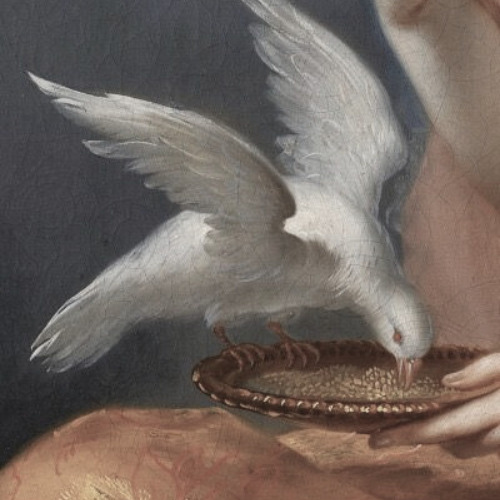
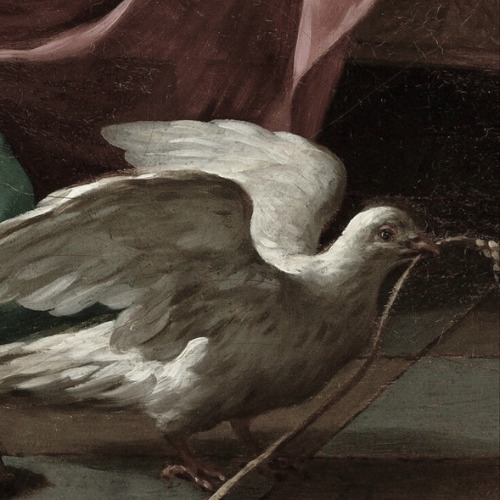
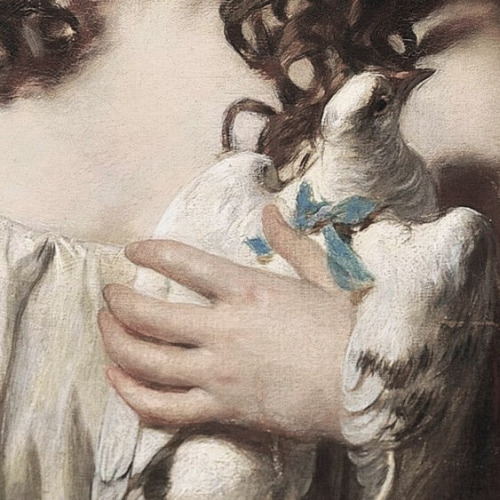
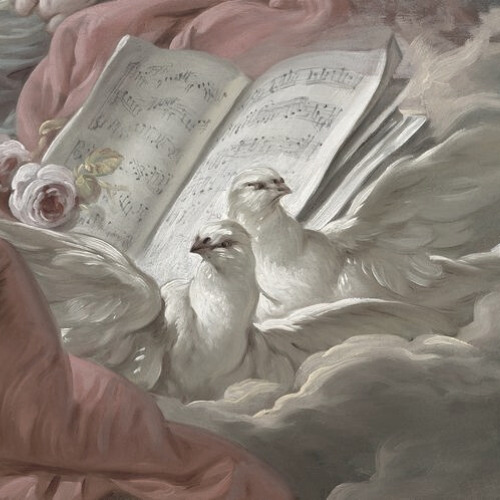
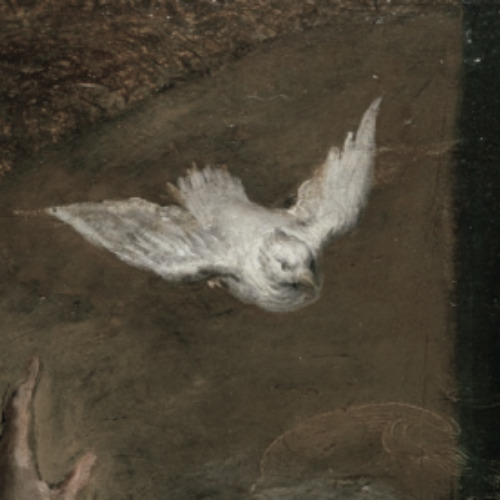
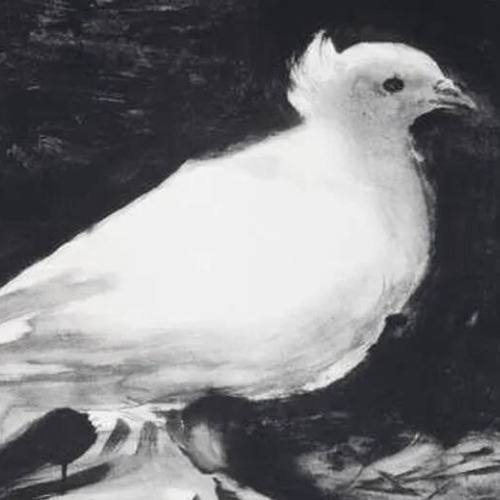

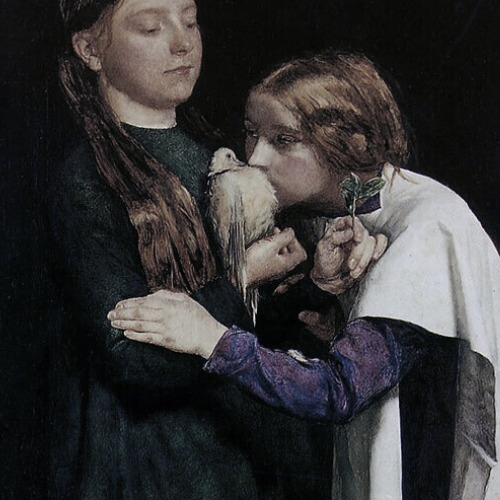
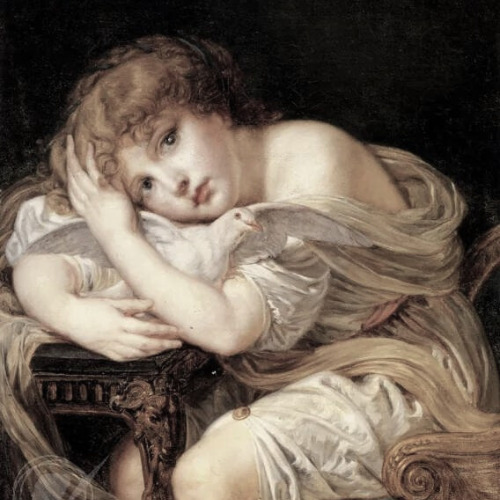


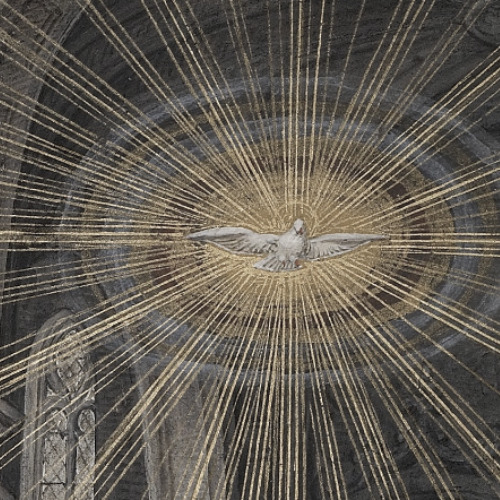

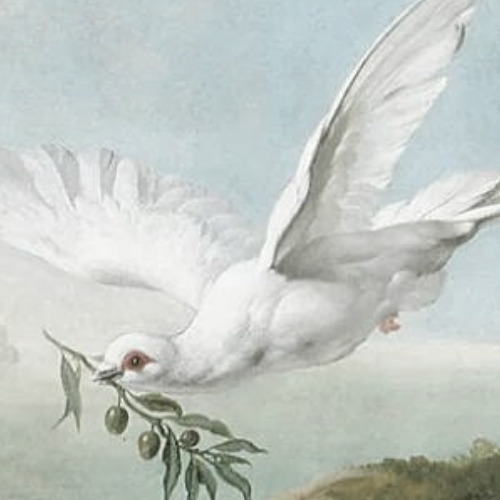

animals in art: dove
#cant find artist#-cant find artist#artist is jane crisp#artist is linda miller#unknown artist#artist is marie spartali stillman#artist is william adolphe bouguereau#artist is albert ritzberger#artist is francesco hayez#artist is francis boucher#--cant find artist#artist is james sant#-artist is francis boucher#unknown artist-#artist is picasso#--unknown artist-#artist is j.e. millais#artist is jean baptise greuze#cant find artist----#artist is alfred seifert#---cant find artist----#artist is agostino carracci#artist is pieter casteels#artist is gustave courbet#art history#art#arthistoryedit#artedit#doves#*mine*
723 notes
·
View notes
Photo

Sir John Everett Millais (8 June 1829 – 13 August 1896)
English painter and illustrator who was one of the founders of the Pre-Raphaelite Brotherhood. (Wikipedia)
From our stacks: Illustration “Grandmother’s Apology. J. E. Millais ‘Once a Week’ Vol. I. p. 241″ from English Illustration. ‘The Sixties’: 1855-70. By Gleeson White. Westminster: Archibald Constable and Co., 1897.
#john everett millais#j.e. millais#millais#grandmother's apology#cat#art#illustration#artist#artists#vintage illustration#engraving#je millais#grandmother#cats#book illustration#pre-raphaelite#english art#english artist#english artists#illustrator#illustrators#book#books#pre-raphaelism#pre-raphaelite brotherhood#pre raphaelite#pre raphaelism#detroit public library
79 notes
·
View notes
Photo

Home Again by James Collinson, 1856
Home Again was painted in the final year of the Crimean War. The British Public had followed the two-year conflict between Britain and Russia in the popular press; with this painting Collinson satisfied the demand for staged homecomings.A weary soldier wearing the uniform of the Coldstream Guards is returning home to his rural cottage. When it was first exhibited a quotation beside the painting explained that the soldier had been discharged because of an accident leading to blindness. As a consequence, the family now faced a bleak future.
'Home Again' was exhibited in 1857 just one year after the Crimean War had finished and viewers who saw the picture then would immediately have grasped the full meaning of Collinson's work. However, much of the force of Collinson's narrative, relying as it does on details and allusions which were undoubtedly familiar to mid-nineteenth-century eyes, is lost on present day gallery-goers.
In March 1854 Britain had declared war on Russia over what she considered Russia's unprovoked aggression against her ally Turkey and which had its roots in a dispute over who should have the guardianship of Christian shrines in Palestine. In July 1853 Russia had invaded Moldavia and Wallachia, two provinces of the Ottoman Empire, and then in the following November had sunk the Turkish fleet. She thereby made plain that her ambition was to eventually gain control of the Bosphorus and the Dardenelles so that her navy could have unhindered access to the Mediterranean from the Black Sea. Britain saw the Russian navy as a threat to her supremacy in the Mediterranean, but it was the Russian refusal to move out of Moldavia and Wallachia, even in the face of a British and French naval threat in the Black Sea, which led to the formal alliance of Britain and France (with, later, Turkey) followed by the outbreak of hostilities with Russia.
By the time peace was proclaimed in April 1856 the British public had been exposed to some of the realities of a foreign war in a way that had never before happened in the country's history. Two important factors contributed to this state of affairs: the presence of a reporter - William Russell from The Times - in the field meant that there were frequent accounts in the daily press of both the appalling conditions endured by the soldiers in the extremes of the Crimean summer and winter and also just how badly the war was being managed by the Government back home; and then the existence of the weekly paper The Illustrated London News ensured that images of the landscape, the battles and the military commanders were easily accessible to the public for more or less the entire duration of the conflict. The public thirst for news and impressions of the war was also satisfied by a number of exhibitions and panoramas (for example, those at the Gallery of Illustration in Regent Street and Burford's Panorama in Leicester Square in which the displays showing the progress of the allied armies were periodically updated).
The war was dominated by the allies' year long siege of the Russian naval base at Sebastopol which lasted from September 1854 until September 1855 - a period which embraced victories at the Battles of the Alma and of Balaklava. An idea of just how much impact the war made on the home public at the time can perhaps be gauged by the extent to which there are still reminders of it surviving to this day. For example, the Balaklava helmet - a woollen covering for the head and neck worn by soldiers camped out on the plain near the village of that name; William Russell's description, in a dispatch in The Times of 25 October 1854, of the 93rd Regiment in action at Balaklava as a 'thin red streak tipped with a line of steel' is perpetrated in the 'thin red line' commonly used when pinpointing a battle front on a map; the modern profession of nursing was created by Florence Nightingale in her hospital for soldiers at Scutari; the order for valour, the Victoria Cross, was instituted by Queen Victoria in 1856, and until 1942 its bronze cross was made from the metal of guns captured at Sebastopol; and the Battle of Alma is commemorated in the names of streets, terraces and public houses in London and elsewhere in England. The most famous piece of literature inspired by the war is, of course, Alfred Tennyson's 'The Charge of the Light Brigade', published a few weeks after the occasion on which the Brigade had been all but wiped out at Balaklava. Rather less well known is the debt owed by Charles Dickens's extraordinary creation of the Circumlocution Office in Little Dorrit (published from 1855) to the revelations about the inefficient workings of the War Office brought to light by an official commission of enquiry into the conduct of the war.
Engaging as it did the full attention of a patriotic public the Crimean campaign presented a wealth of opportunities - for artists to exploit - from the production of portraits of the leading politicians and officers involved in the conflict to the rendering of battlefield topography. Some, for example William Simpson (1823-99) and E.A. Goodall (1819-1908), actually received commissions early on to travel to the Crimea so they could send back drawings to London - in Simpson s case for the dealer Colnaghi who published prints after his work and in Goodall's case for The Illustrated London News. In February 1855, in a collaboration between the dealer Agnew and the Government, the photographer Roger Fenton (1819-69) who had trained as a history painter, left for the Crimea in order to provide a record of the war which would - so the authorities hoped - counterbalance Russell's pessimistic account of affairs. Some of his prints formed the basis of engravings in The Illustrated London News but towards the end of 1855, after Fenton had come back, Agnew's started selling them to the public - more than three hundred images being made available in this way. The great revelations provided by Fenton's photographs (though he was only one of a number of war photographers) were, firstly, the vast scale of the destruction wrought by modern military bombardments and, secondly, the fact that the conventional view of battles purveyed by history painters - where perfectly kitted-out armies charged in ordered lines - was false. Nevertheless,. Edward Armitage (1817-96), an established history painter, was to be commissioned by the dealer Gambart to visit the battlefields at Balaklava and Inkerman in order that he might recreate on canvas appropriately heroic views of the British actions there. They were duly put on public display to some acclaim, along with other Crimean views by Simpson, at Gambart's Gallery in Pall Mall in March 1856 (Critic, 15 March 1856, p.156 and Jeremy Maas, Gambart, Prince of the Victorian Art World, 1975, p.79).
Predictably enough, not only because it was the largest of the London picture shows, but also because historically its role was one of promoting a national school of history painting, the Royal Academy exhibitions during the war years provide an accurate barometer of how strongly artists responded to the challenge presented by the war. And so, in 1855, there were seventeen painters and sculptors who dealt with the subject, in 1856, thirteen and then, in 1857, only seven. Collinson's 'Home Again' has to be set within the context of work exhibited here and elsewhere, and also alongside other pictures which had the war as their inspiration.
First to be considered - because they formed the earliest graphic commentary on the war - must be the cartoons which started appearing in the weekly journal Punch from early 1854 onwards. Frequently comparable in their bite to Dickens's satire in Little Dorrit, their subject - just as in 'Home Again' - was often the lot of the simple soldier: John Leech's picture of two raggedly clad privates camped out in a snowswept plain and their conversation - '"Well, Jack! Here's good news from Home. We're to have a Medal". | "That's very kind. Maybe one of these days we'll have a coat to stick it on"' - was a pithy comment on the plight of the expeditionary force (Punch, 17 Feb. 1855, p.64). Other Punch drawings by Leech, 'Britannia Taking Care of the Soldiers' Children' (4 March 1854, p.85) and 'For the Soldiers' Children' (6 May 1854, p.184), or by other artists, 'The Soldier's Dream' (5 April 1854, p.130), 'Sebastopol - A Prayer for the Brave' (30 Sept. 1854, p. 127) and 'Britannia Takes the Widows and Orphans of the Brave under her Protection' (21 Oct. 1854, p.161), represent a potent distillation of a national as well as a private sense of grief about the effects of war and underline the fact that more substantial images on the same theme, such as C.W. Cope's 'Consolation' (RA 1855, no.69, oil on canvas, 700 x 590, 17 x 20, Christie's 1 Nov. 1985, lot 72, repr.) and F.G. Stephens's similar but unexhibited 'Mother and Child' of about the same date (Tate Gallery, N04634) are not to be dismissed as mere products of Victorian sentimentality.
For those easel painters who, like Collinson, Cope and Stephens, remained at home, two of the most obvious war subjects available to them were those which touched upon the themes of what might be broadly termed 'news from the front' and 'the returning soldier'. Not surprisingly, given their early hopes that their combined aims of absolute truth to nature and utter sincerity of purpose would imbue their treatment of modern life subjects with the power of 'turning the minds of men to good reflections' (J.E. Millais to Mrs Combe, 28 May 1851, quoted in J.G. Millais, The Life and Letters of Sir John Everett Millais, 1899, I, p.103), some of the members of the by then dispersed Pre-Raphaelite Brotherhood, one of whom, of course, was Collinson (another being F.G. Stephens), as well as others from their immediate circle who sympathized with their aims, were quick to test the potential of Crimean subject matter in precisely these two areas.
Among the very earliest and most notable of those pictures in the first category was Ford Madox Brown's 'An English Fireside in the Winter of 1854-5' which was first exhibited in Paris in 1855 and then again at the Liverpool Academy in 1856 (270). This shows an officer's wife, her sleeping child lying across her lap, pausing as she sews, engrossed in thoughts of her husband (whose portrait lies on the table beside her) at Sebastopol (Walker Art Gallery, Liverpool, oil on panel 310 x 200, 12 x 8; repr. Art Journal, 1909, p.251). It was an idea which Brown had developed in the spring of 1855, just as the final assault on Sebastopol was beginning to gain momentum, out of an earlier, similar, composition (see Mary Bennett, Ford Madox Brown, 1821-1893, exh. cat., Walker Art Gallery, Liverpool 1964, p.18 no.24). What elevates Brown's small picture above any other work inspired by the war is its successful projection of the idea of uncertainty. By contrast, the two pictures by Cope and Stephens already referred to, which might be regarded as sequels to the episode depicted by Brown, are inevitably less satisfactory because they show that moment after the news of a husband's and father's death has arrived: the tension has snapped because grief in all its fullness is displayed.
One artist in the Pre-Raphaelite circle, Arthur Hughes (1832-1915), felt sufficiently strongly about the effects of the war at this time to not only treat the subject but also to contribute his painting to the Patriotic Fund Exhibition in time for its opening in March 1855 - where it was to be sold for the benefit of orphans and widows of soldiers and sailors. The picture, now lost, but described as a small oil sketch, showed a soldier coming back to his wife and child, and apparently resembled Millais's 'The Order of Release' (Tate Galley, N01657) in its composition (Spectator, 31 March 1855 p.344). With the siege of Sebastopol over in the following September and the war officially finished in April 1856, the same subject acquired a new significance because the entire Crimean army was soon on its way back to England. The first painting in the genre (in which Hughes might perhaps be regarded as a pioneer in this instance) to actually catch the eyes of the critics was by yet another artist who sympathized with the Pre-Raphaelites, Joseph Noel Paton (1821-1901), who exhibited 'Home' at the Royal Academy in 1856 (35; untraced). This showed a corporal in the Guards who has just returned to his cottage; he has lost his left arm and, exhausted by his journey, has slumped onto a chair to be embraced by his kneeling wife while his mother weeps upon his shoulder. Described by John Ruskin as a 'most pathetic and precious picture' ('Academy Notes, 1856', E.T. Cook and A. Wedderburn, eds, The Works of John Ruskin, XIV, 1904, p.150), a print after it appeared in the following November (mezzotint by H.T. Ryall; An Alphabetical List of Engravings Declared at the Office of the Printsellers' Association, London 1847-1891, 1892, p.171, records that it appeared in an edition of 1,775 impressions) and Queen Victoria commissioned a replica (Oliver Millar, The Queen's Pictures, 1977, p.184, pl.219). Within a few weeks of the appearance of Paton's picture, Ford Madox Brown was considering a more pathetic variation on the theme though, in the end, it was never worked up into a finished picture: '... three figures, to be called "How it was", a youth quite a boy home from the Crimea with one arm, narrating to a poor young widow "how it was", a young girl, his sister, hugging him' (Virginia Surtees, ed., The Diary of Ford Madox Brown, New Haven and London, 1981, p.178, entry for 19 July 1856).
One final, initially very different, view of the returning soldier but one which in its changed state acquired the greatest popularity in its day must be mentioned here. John Millais, perhaps owing some debt to the satire of his great friend Leech, set out to deal with the privileges enjoyed by the officer class. He found a good subject in the scandal surrounding those who had excused themselves from further active service in the Crimea on the grounds of having 'urgent private affairs' to attend to back home. The contrasting total lack of similar rights for the humble private was illuminated by Punch in its cartoon 'The New Game of Follow my Leader' in which the infantryman is shown asking his general 'May me and these other chaps have leave to go home on urgent private affairs' (24 Nov. 1855 p.209). Millais showed 'a young officer ... being caressed by his wife and their infant children were themselves the laurels which he ought to be gathering'. However, with the coming of peace and the satire thus misplaced, Millais had to revise the composition: the officer was instead shown weakened by the effects of a wound, reading, with his wife, the news of the cessation of hostilities as printed in The Times, and the composition was entitled 'Peace Concluded' when exhibited at the 1856 Academy (no.200; now Minneapolis Institute of Art; repr. Geoffroy Millais, Sir John Everett Millais, 1979, p.56; see also, W. Holman Hunt, Pre-Raphaelitism and the Pre-Raphaelite Brotherhood, 1905, II, p.105 and Virginia Surtees, op.cit., p.169, entry for 11 April 1856). Extravagantly praised by Ruskin, the work was one of the pictures of the year at the Academy and Millais's name has helped ensure that it is the only image from the war years to have achieved any sort of lasting fame.
At the opposite extreme, in subject matter, in the depth of feeling which seems to underly its conception, and in the critical reception accorded to it, is Collinson's 'Home Again'. Dated 1856 but not exhibited until the Spring of 1857 it must be numbered among the last of those paintings which owed their inspiration directly to the spirit of the times - and which, no doubt, the artist hoped would help sell his picture. But 'Home Again', far from being an isolated response to the war on Collinson's part, actually seems to represent the culmination of his efforts to produce a substantial image incorporating his thoughts about the war. In the spring of 1856 he had exhibited a picture entitled 'A Man Who Has Been with Death' at the National Institution of Fine Arts (349, untraced). It must have been a small work since it was only priced at fifteen guineas and it is quite conceivable that a painting Collinson exhibited at the Liverpool Academy later that year, 'A Crimean Hero' (790, untraced), for sale at twelve guineas was the same work under a different title. Whether or not this was the case, there can be little doubt that in the latter instance at least, the artist's subject must have been a soldier back from the war - the central theme, of course, of T04105. Alongside this, another work by Collinson which has survived should be considered for it too has a direct bearing on 'Home Again'. Once again a small work, in oil on panel, 270 x 215, 10 3/8 x 8 1/2, it is signed and dated 1856 and is prominently inscribed 'Siege of Sebastopol | by an eye witness' (Christopher Forbes and Andrea Rose, The Art and Mind of Victorian England, exh. cat., University of Minnesota Art Gallery 1974, pp.31-2, repr., and also Sotheby's Belgravia, 9 April 1980, lot 18, repr. in col.). It depicts two young boys playing: one, on top of a mangle, attempts to repel the other who, grasping its handle, is about to set the mangle in motion and so topple his opponent off his perch. On the wall behind them is a print, the subject of which - a guardsman bayonetting his enemy - sombrely echoes the boys' horseplay; the print bears the word 'ALMA' and then a sign just above this print notes, in words which both pinpoint the actual domestic circumstances in which the boys live and at the same time act as an incisive commentary on the separate images of conflict which Collinson has shown, 'MANGLING | DONE HERE'. The irony employed here suggests that the picture could well have been the work exhibited by Collinson at the Liverpool Academy, also in 1856, under the title of 'Children at Play' (774, price £36.15.0).
Clearly, the 'Sebastopol' painting is a first idea, and is used virtually unaltered, for the left-hand group in 'Home Again', but this time the boy on top of the mangle holds aloft the Royal Standard, out of reach of his assailant, the print on the wall beyond shows a more clearly defined, though unidentified, battle scene and the 'mangling' notice has gone. Below them, sitting on the floor and leaning against a tub in which two toy warships float, is a third child who, nursing a grazed knee, has also been involved in this childish scrap.
The motif of children acting out more serious adult preoccupations in their play is a device which Victorian painters frequently used to provide a commentary on the abiding weaknesses and irresponsibilities of humanity in general. An obvious parallel with 'Home Again in this respect is found in William Mulready's 'The Convalescent from Waterloo' of 1822, where a wounded soldier is faced by the sight of two boys scrapping (Victoria and Albert Museum; see Marcia Pointon, Mulready, exh. cat., Victoria and Albert Museum 1986, p.128 no.108, pl.XXVII). In T04105 the universal truth expressed, so far as the inevitability and folly of war is concerned, is given further weight by the reminders - in the Royal Standard, the royal crest on the stoneware jug next to the tub and the model of the British Lion on the mantelpiece - that patriotism too, plays a part in the shaping of men's ambitions.
Collinson's audience would have had little difficulty in picking up these points and even if there is still the whiff of the studio about the picture (for example, the lantern and the tartan rug slung over a washing line are props used by the artist in 'The Writing Lesson', RA 1855, no.321; Christie's 24 June 1983, lot 13, repr.) the meticulous attention to detail as well as overall concern for authenticity in those areas where the artist's public would quickly identify any solecism do demand our attention. The returning soldier is tanned and bearded - a characteristic of the Crimean veterans which was commented upon by the press at the time. His red coatee, with its dark blue collar and cuff facings, pewter buttons in pairs and white epaulette with its loose tassels and the dark blue field service cap with its white piping (known as the 'Albert Bonnet' after Prince Albert, its designer) single him out as a private in the Coldstream Guards. In a touch that is intended to add further pathos to the scene Collinson has indicated on the soldier's right sleeve four chevrons for good conduct; and pinned to his left breast is a silver medal on a crimson ribbon which is the Long Service and Good Conduct Medal (Army) instituted in 1830 and awarded to soldiers who, in the case of the infantry, had served for twenty-one years (the compiler is indebted to Mrs Daphne Willcox of the National Army Museum for kindly supplying this information).
Collinson's hero would have been in the 1st Battalion of the Coldstream Guards, one of the three Guards battalions (the others being the Grenadiers and the Scots Fusiliers) which served in the Crimea. The first draft left London, before hostilities began, on 14 February 1854 and the arrival of the sixth and last draft in the Crimea on 1 March 1856 brought the total number of Coldstreams who served in the war to two thousand and sixty. According to a survey of the occupations held by the men at the time of enlistment, of the total about seventy-five per cent were agricultural labourers and Collinson accurately reflects this by setting his scene in what is obviously a rural cottage. The Battalion finally embarked from the Crimea on board HMS Agamemnon on 4 June 1856, arriving at Spithead twenty-four days later and then travelled by train to their camp at Aldershot. The triumphal entry into London of all the Guards who had seen war service took place on 5 July when they marched from Nine Elms Station over Vauxhall Bridge, along Pall Mall and then via Buckingham Palace to Hyde Park, led by the Grenadiers marching to the tune of 'See the Conquering Hero Comes'. The seven Guards Battalions mustered in Hyde Park where the salute was taken by Prince Albert and where they were mobbed and cheered by the proud and patriotic citizens of London. Overshadowing the thrilling spectacle was the grim fact that three hundred and ninety officers and more than twenty thousand non-commissioned officers had not returned and nearly fifteen thousand men had been invalided during the course of the war. Of the Coldstream Guards, the central figure in 'Home Again', who is apparently blind, would have been one of the one hundred and eleven men discharged from the army on account of their disabilities (information from Col. Ross of Bladensburg, CB, The Coldstream Guards in the Crimea, 1897). None of these men would have been in the victory parade and although the guardsman here, with his long service medal, would have received a pension, his prospects were indeed bleak: he would be excluded from any further useful employment unlike those veterans who suffered the commonest disability inflicted by the war - loss of limbs, through cannon shot. 'Many of these men', pointed out an earlier writer, 'although unfit for military service, are quite capable of duties where steady habits of discipline, trustworthiness and obedience are required ... they are well suited to act as watchmen, gatekeepers, porters or warehouse keepers, and as porters in attendance upon passengers at railways would be highly useful ... We are glad to learn that every opportunity of employing them in the Royal Parks will not be forgotten' (Illustrated London News, 10 March 1859, p.238).
Few critics noticed 'Home Again' when it was exhibited: the Society of British Artists rarely attracted any sustained attention from the press and the subject was by now, anyway, rather too familiar. The Spectator thought it a work 'containing a good deal of matter, clearly if not strongly presented' (28 March 1857, p.343) while the Art Journal described it as 'full of appropriate material very minutely executed' (vol.3, May 1857, p.144). The most extended and adverse comment appeared in the Literary Gazette. It was, the critic wrote,
a picture which has manifestly cost the author much patient and careful thought, and the amount of success accomplished is by no means inconsiderable. The subject is trite to weariness ... nor is the treatment of a character to redeem the picture from the usually homely type. Here are the stock members of the family group which have figured in every similar scene from Wilkie's [Blind] Fiddler downwards; and it is only upon another version of this oft told tale that the ingenuity of the composer has been employed. For the careful, painstaking and modest manner, however, in which the attempt has been carried out, much praise is due to the artist. (4 April 1857, p.330)
'Home Again' was at one time owned by a prominent Liverpool businessman, Samuel Stitt (1816-98) who made his fortune as an iron merchant and shipowner. Very probably Stitt acquired the picture directly from the artist (it was for sale for £150 at the SBA) though the earliest indication of it having been in his collection is found in an advertisement for the sale of the contents of his house in the Liverpool Daily Post for 19 September 1898 (p.4). As a religious and benevolent man and also as a politician of a radical persuasion (he had been an active member of the Anti-Corn Law League) he may well have viewed the Crimean war with particular distaste and so the moral behind Collinson's picture would have appealed to him. In addition, in 1857, Stitt moved into a new house, The Grange, at Claughton which he had built for himself and it would have been quite natural for him to acquire new pictures at that time (see B. Guiness Orchard, Liverpool's Legion of Honour, Liverpool 1893, pp.655-6; the compiler is indebted to Edward Morris for supplying this reference). His collection also included works by other British artists including F.W. Hulme, Patrick Nasmyth and T.L. Rowbotham. In 1885 he presented a bust of W.E. Gladstone by Albert Joy (1842-1924) to the Walker Art Gallery in Liverpool and under the terms of his will an oil painting by John Smart (1838-99), 'The Pass of the Cateran', was also bequeathed to the same gallery (Walker Art Gallery: Illustrated Catalogue of the Permanent Collection, Liverpool 1927, pp.105,174).
6 notes
·
View notes
Text
May 12 is the birthday of Dante Gabriel Rossetti.
Dante Gabriel Rossetti was born in London in 1828. His first interests were manuscript illumination and poetry. Rossetti started studying art in 1841, then in 1845 began studying at the Antique School of the Royal Academy of Art in London. Then Rossetti studied with his life-long friend Ford Madox Brown. In 1848, Rossetti jointed the studio of William Holman Hunt.
In 1848, Rossetti, William Holman Hunt and J.E. Millais formed the Pre-Raphaelite Brotherhood. Rossetti’s Girlhood of Mary Virgin (above) was the first painting to be exhibited with the initials of the Pre-Raphaelite Brotherhood: PRB. The Pre-Raphaelites disdained contemporary British art and wanted to restore, what they considered, the more authentic and simple art before Raphael (Rafaello Sanzio, 1483-1520). The Pre-Raphaelites believed Raphael was the epitome of rigid Academic art. Like Rossetti, the Pre-Raphaelites were fans of the poetry of Alfred Lord Tennyson and John Keats, whose work inspired their art. The Pre-Raphaelites published a journal: The Germ.
The harsh criticism to which his work was subjected convinced Rossetti to exhibit in public only occasionally after 1850. He also started painting in watercolor more than oils. In 1854, Rossetti met an important art critic who became his advocate: John Ruskin. Through Ruskin, Rossetti met many patrons and collectors.
His wife had a still-born child and died of a drug overdose in 1862. Rossetti wrote a series of poems to her, which were buried in her coffin. But in 1869, Rossetti had them exhumed and published. At about this time, Rossetti started painting in oil again. He was a popular and successful portrait painter.
Rossetti’s poetry was subjected to indecorous criticism in 1870. In his final years, Rossetti lived alone, shunning company, addicted to drugs and alcohol, surrounded by a menagerie of wild animals, including a wombat, to whom he dedicated a poem. Rossetti painted until his death. He died in 1882. Rossetti’s work was immensely influential and encouraged a later group of Pre-Raphaelite artists.
View On WordPress
0 notes
Photo

Sir John Everett Millais (8 June 1829 – 13 August 1896)
English painter and illustrator who was one of the founders of the Pre-Raphaelite Brotherhood. (Wikipedia)
From our stacks: Illustration “Sister Anne’s Probation. J. E. Millais. ‘Once a Week’ Vol. VI. p.42″ from English Illustration. ‘The Sixties’: 1855-70. By Gleeson White. Westminster: Archibald Constable and Co., 1897.
#john everett millais#j.e. millais#millais#art#artist#illustrator#illustration#illustrators#artists#english art#english artist#english artists#vintage illustration#book illustration#book#books#sister anne's probation#pre-raphaelite#pre-raphaelism#pre-raphaelite brotherhood#pre raphaelite#pre raphaelism#reading#love#swain#engraving#detroit public library
31 notes
·
View notes
Photo

From our stacks: Illustration “Tannhäuser. J. E. Millais ‘Once a Week’ Vol. V. p. 211″ from English Illustration. ‘The Sixties’: 1855-70. By Gleeson White. Westminster: Archibald Constable and Co., 1897.
#tannhäuser#john everett millais#j.e. millais#millais#illustration#art#artist#artists#english art#english artist#english artists#german#minnesanger#tannhauser#german myth#opera#vintage illustration#book illustration#illustrator#illustrators#engraving#books#minnesänger#minnesinger#poet#detroit public library
92 notes
·
View notes
Photo

Sir John Everett Millais (8 June 1829 – 13 August 1896)
English painter and illustrator who was one of the founders of the Pre-Raphaelite Brotherhood. (Wikipedia)
From our stacks: Frontispiece “Sir John Everett Millais, P.R.A. From the Portrait by himself in the Uffizi Gallery, Florence. Alinari Brothers, Photo. Emery Walker, Ph. sc.” from Sir J. E. Millais, P.R.A. By J. Eadie Reid. Illustrated with Twenty Plates and a Photogravure Frontispiece. London: The Walter Scott Publishing Co., Ltd. New York: Charles Scribner’s Sons, 1909.
#john everett millais#j.e. millais#millais#art#artist#artists#books#alinari brothers#alinari#emery walker#photogravure#detroit public library
36 notes
·
View notes
Photo










John Everett Millais (8 June 1829 – 13 August 1896)
English painter and illustrator who was one of the founders of the Pre-Raphaelite Brotherhood. (Wikipedia)
From our stacks: Illustrations from Orley Farm. A Novel. by Anthony Trollope. Illustrated by J. E. Millais. New York: Harper & Brothers, 1862.
#john everett millais#j.e. millais#millais#artist#illustration#illustrator#book#books#book illustration#vintage illustration#art#artists#illustrators#pre-raphaelite#pre-raphaelism#pre-raphaelite brotherhood#pre raphaelite#pre raphaelism#pre raphaelite brotherhood#painter#painters#old book#old books#trollope#orley farm#detroit public library
312 notes
·
View notes
Photo

Frontispiece “Plate I. - The Order of Release. (Tate Gallery)” from Millais by A. Lys Baldry. Illustrated with eight reproductions in colour. London: T. C. & E. C. Jack. New York: Frederick A. Stokes Co., n.d.
#john everett millais#millais#art#the order of release#painting#artist#artists#paintings#order of release#dog#kilt#j.e. millais#detroit public library
37 notes
·
View notes
Photo

Happy Birthday Sir John Tenniel! (28 February 1820 – 25 February 1914)
English illustrator, graphic humourist, and political cartoonist prominent in the second half of the 19th century. He was knighted for his artistic achievements in 1893. Tenniel is remembered especially as the principal political cartoonist for Punch magazine for over 50 years, and for his illustrations to Lewis Carroll's Alice's Adventures in Wonderland (1865) and Through the Looking-Glass, and What Alice Found There (1871). (Wikipedia)
From our stacks: Illustration “The Sleeping Genie and the Lady. From “Dalziel’s Arabian Nights.” By Sir John Tenniel. By permission of Messrs. Ward, Lock & Co.” from The Brothers Dalziel. A Record of Fifty Years Work in Conjunction with Many of the Most Distinguished Artists of the Period 1840-1890. With Selected Pictures By, and Autograph Letters from Lord Leighton, P.R.A., Sir J.E. Millais, Bart., P.R.A., Sir E.J. Poynter, P.R.A., Holman Hunt, Dante G. Rossetti, Sir John Tenniel, Sir E. Burne-Jones, Bart., John Ruskin, and many others. London: Methuen and Co., 1901.
#sir john tenniel#book illustration#dalziel#arabian nights#genie#tenniel#art#artist#artists#illustration#vintage illustration#sleeping genie#brotehrs dalziel#genies#mythology#illustrator#illustrators#john tenniel#fairy tales#detroit public library
264 notes
·
View notes